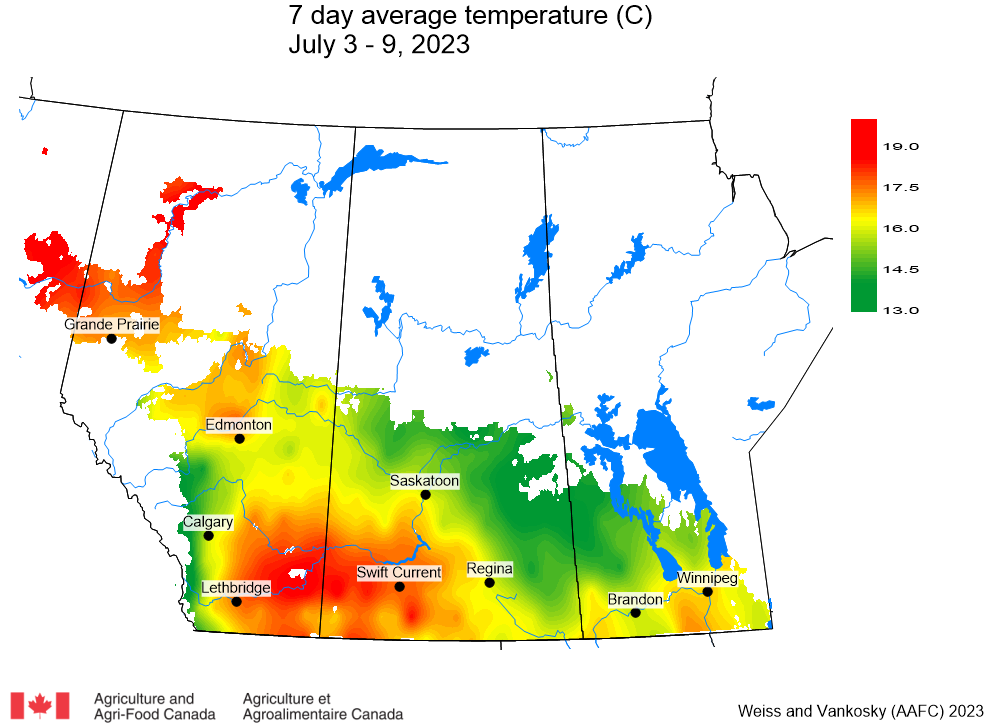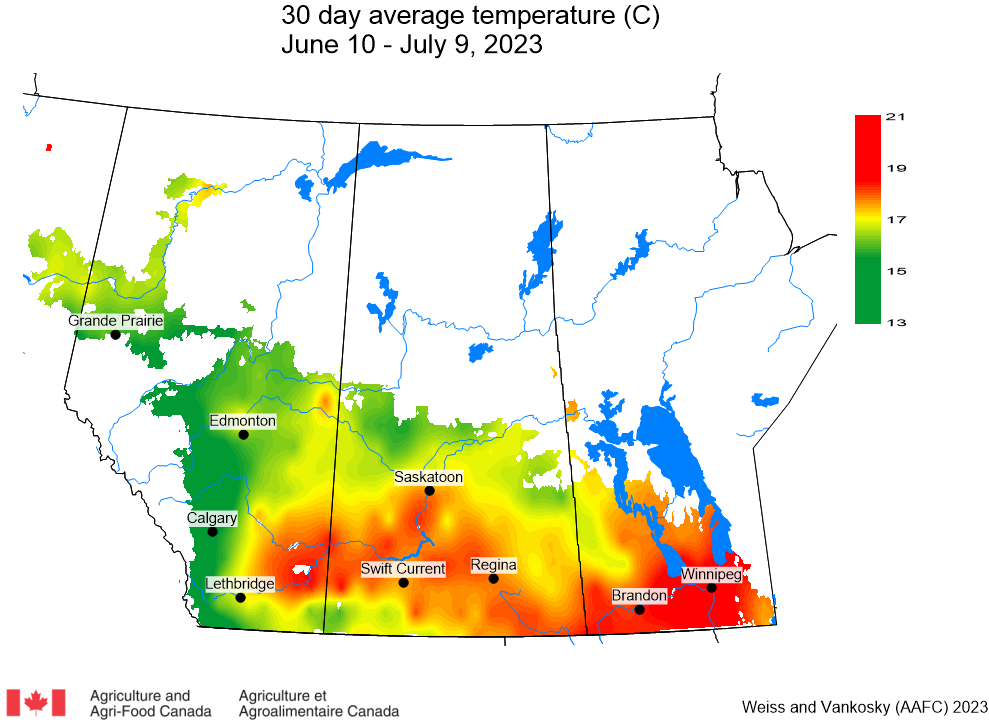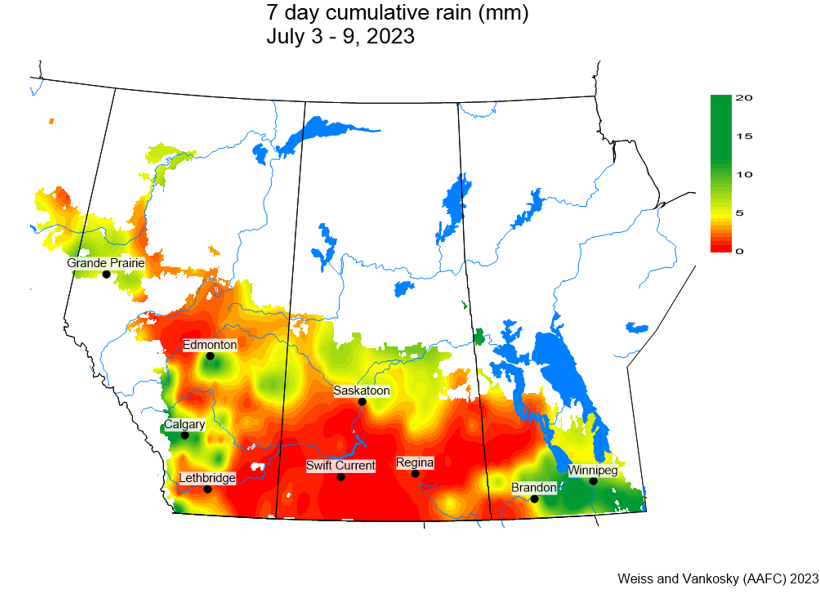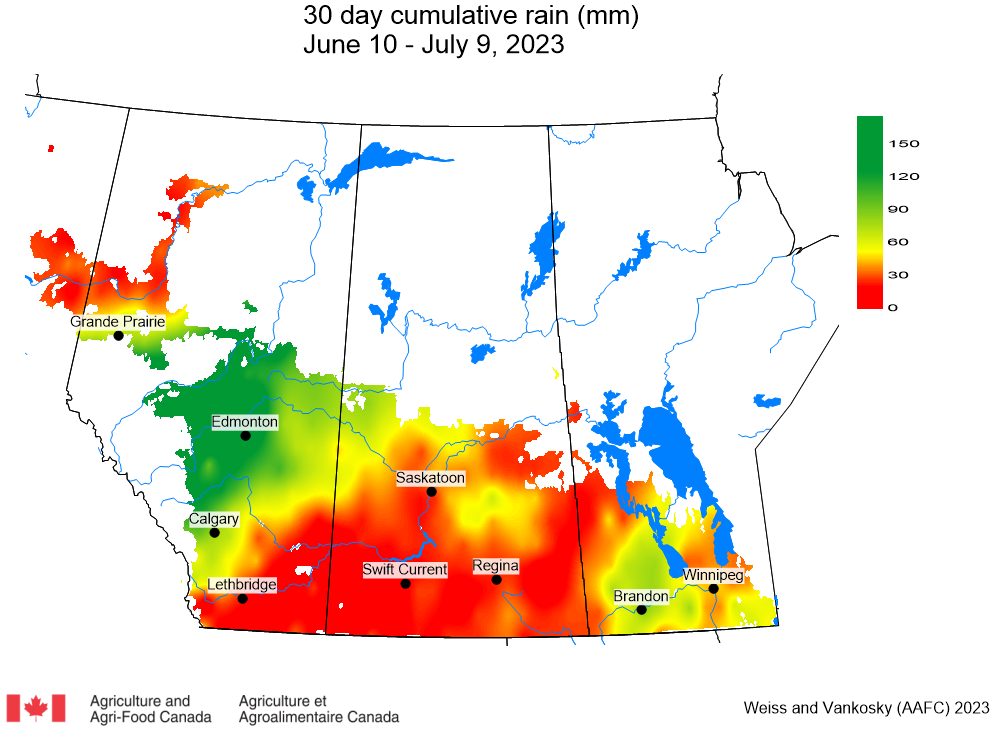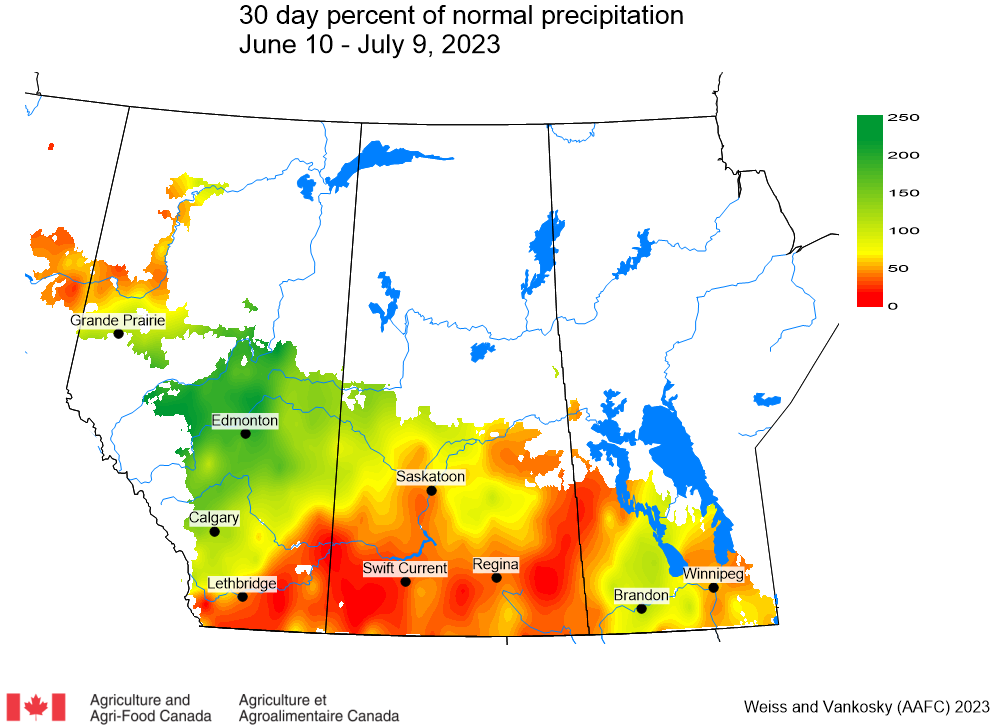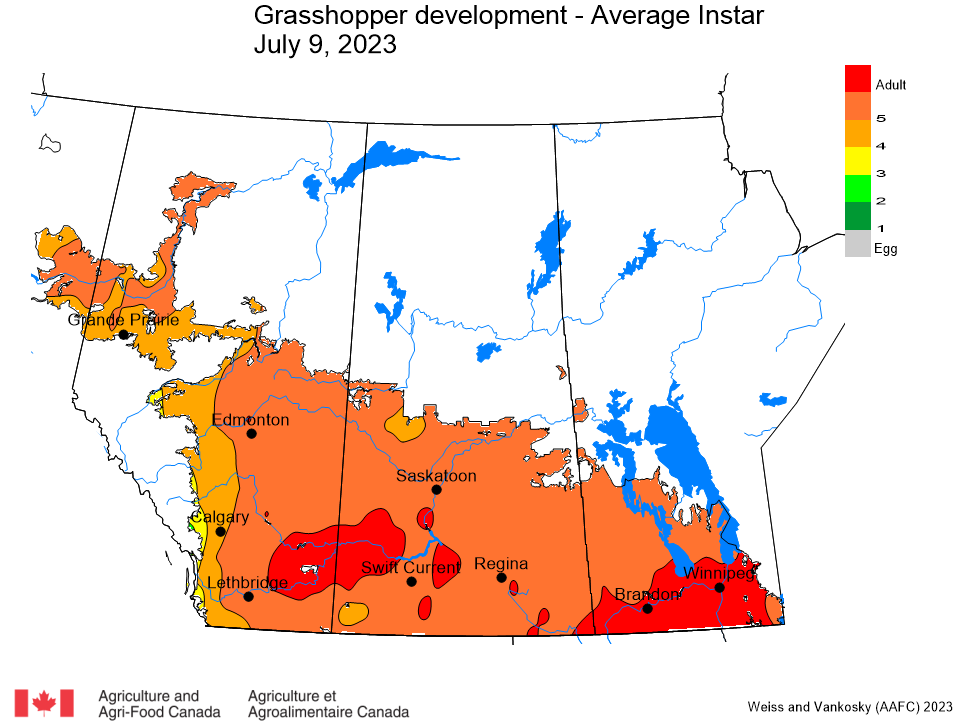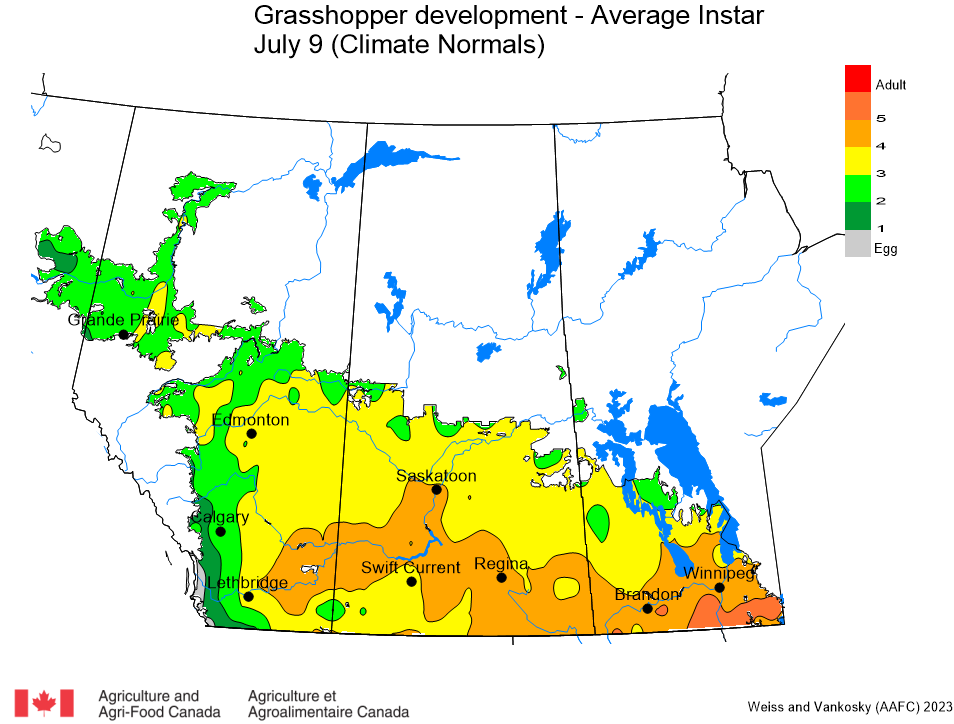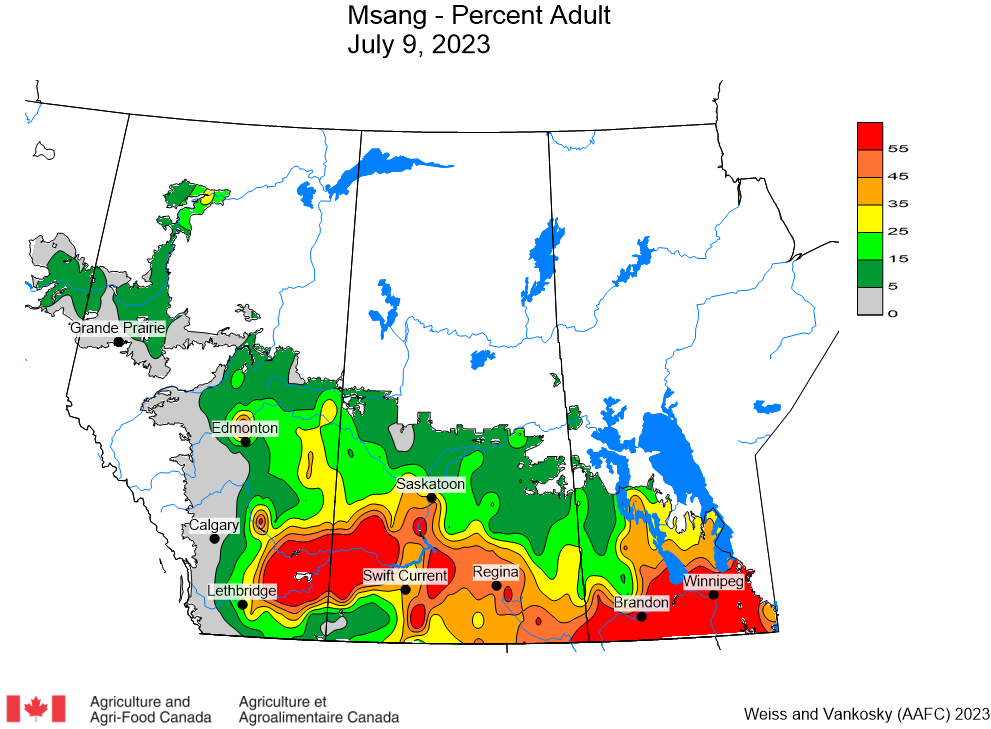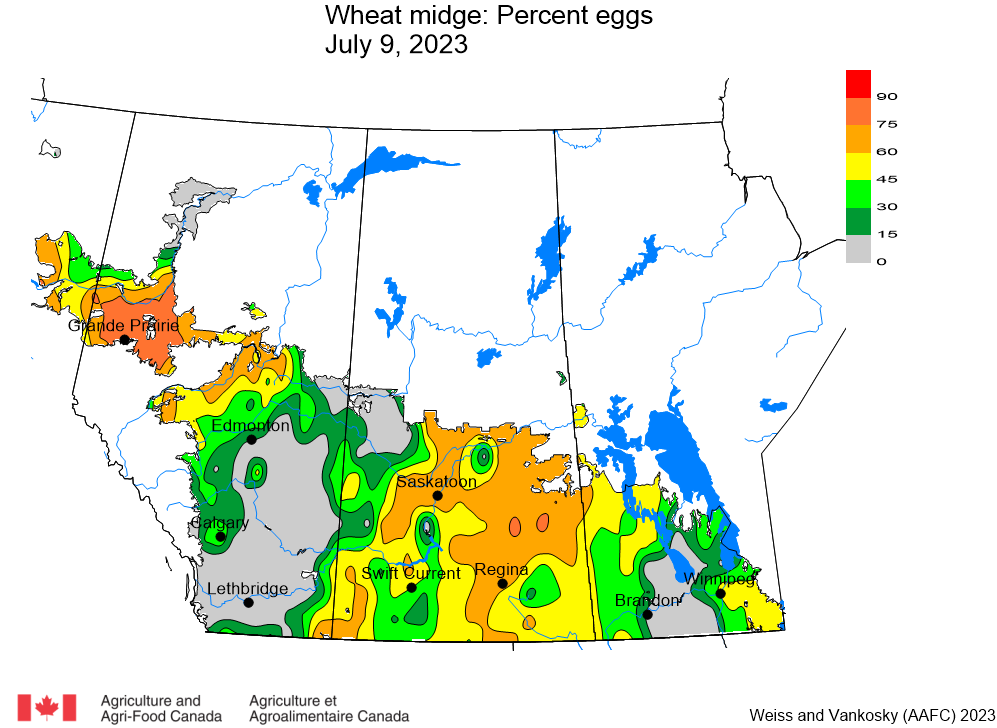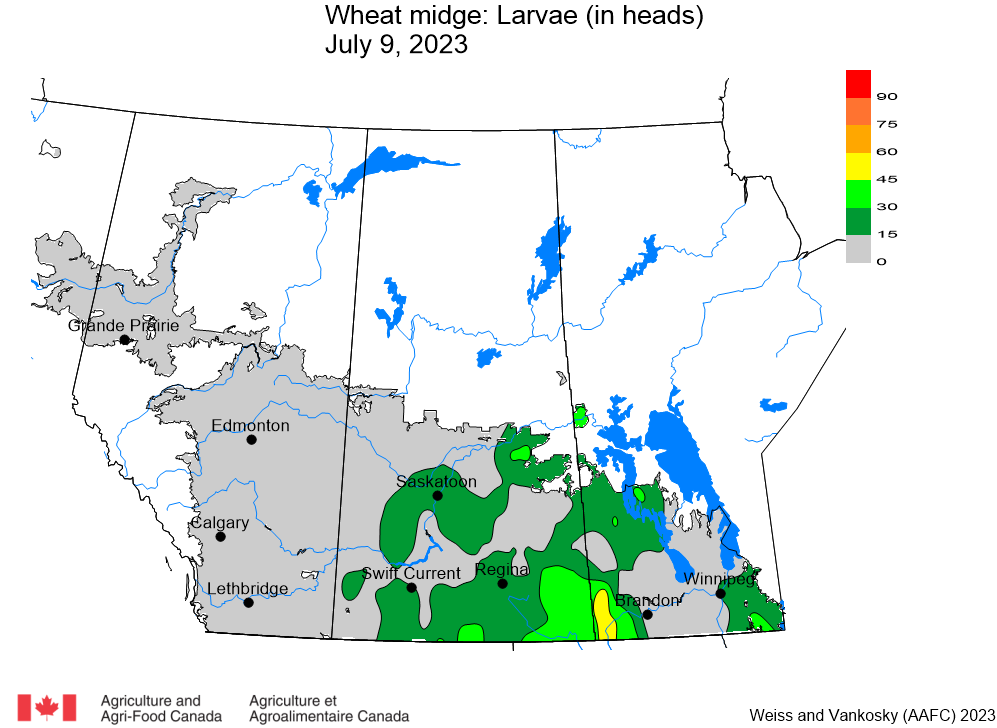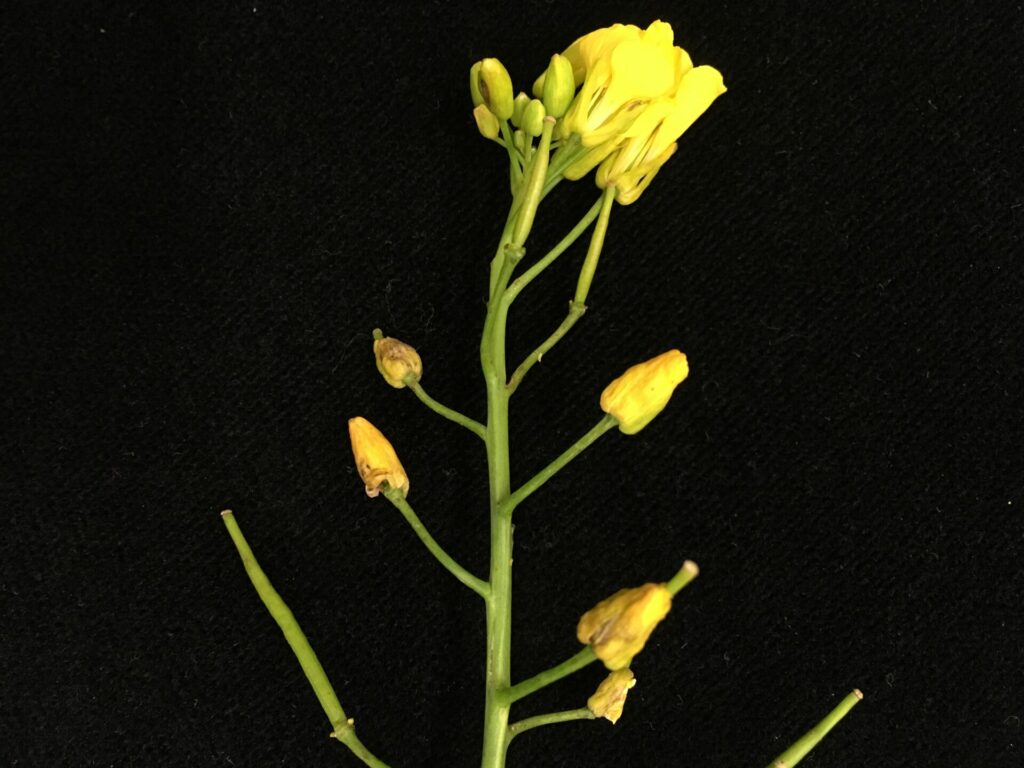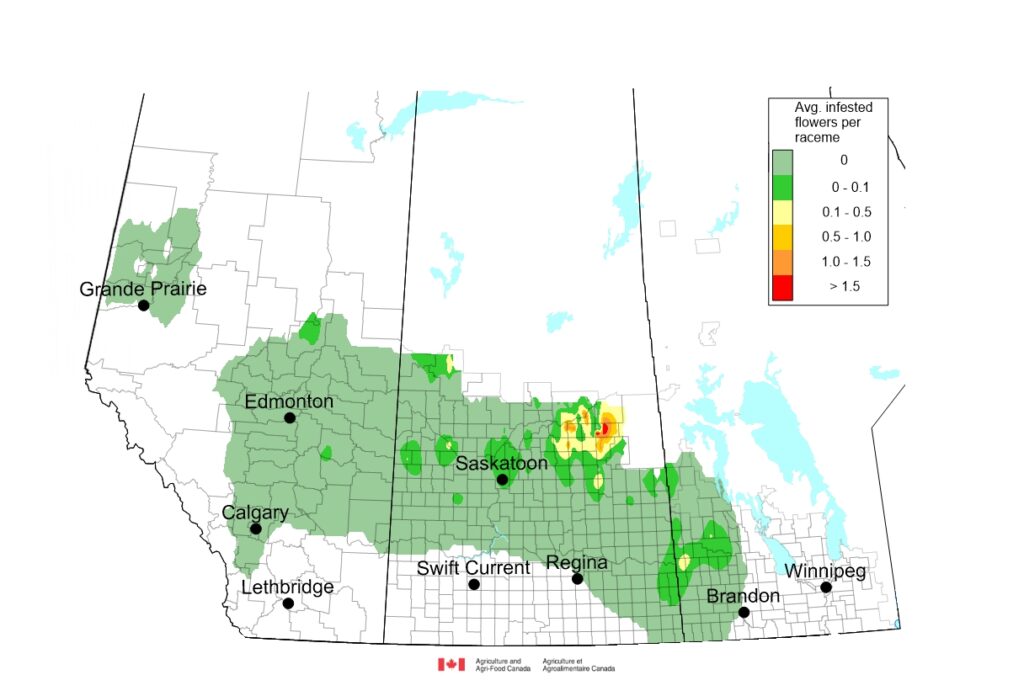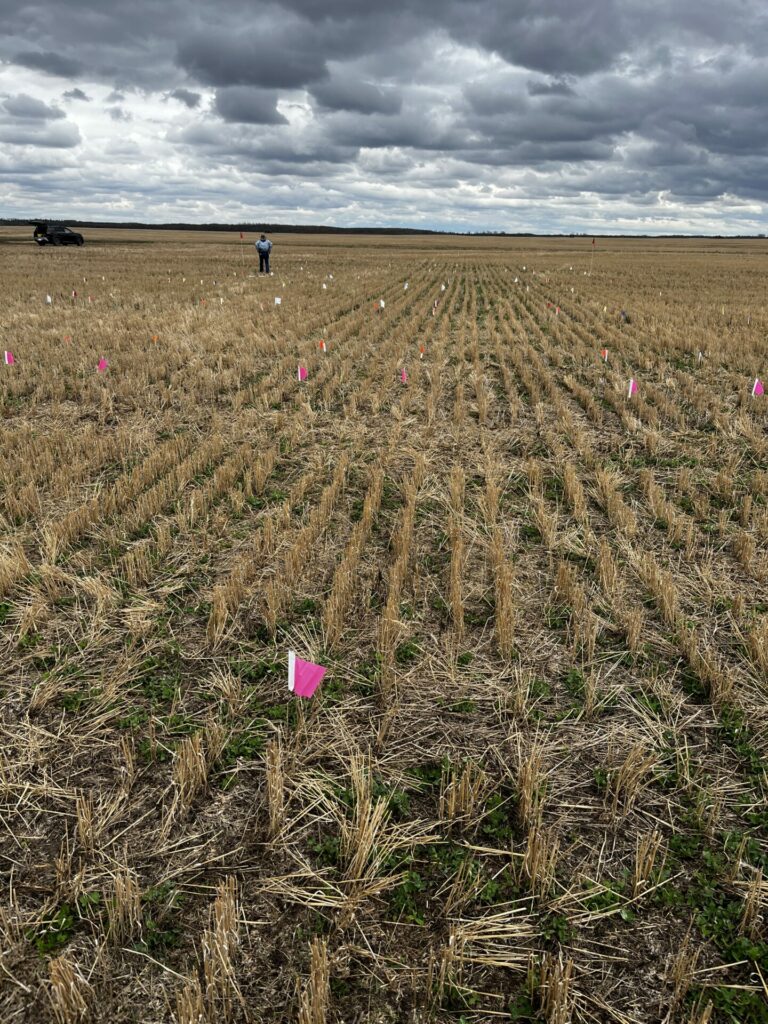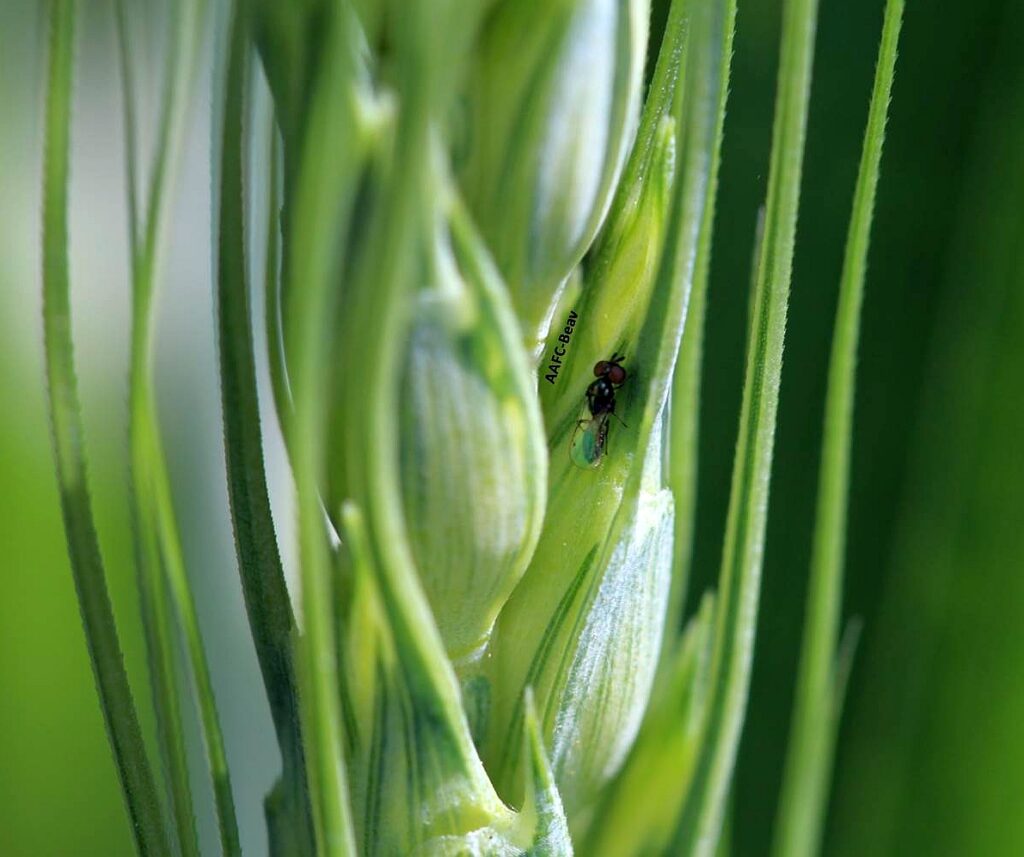Insect scouting season continues! Development of many pest insects (and of their host crops) is ahead of schedule this year, thanks to warmer than average weather in May and June.
Adult grasshoppers are becoming more common across the prairies now. Although grasshoppers are more widespread this year than in the past few years, the stage of grasshopper development and grasshopper population densities can vary between even relatively close locations. Scouting individual fields is important to best estimate crop risk.
The first adult wheat midge of 2023 were reported in Saskatchewan in late June. Adult flight may have peaked in some areas, but scouting remains important in wetter areas of the prairies.
Diamondback moth could be entering into the third non-migrant generation in some areas this week (if present). Check back next week for a more in-depth update on diamondback moth development but keep in mind that diamondback moth develop quickly in warm weather which could lead to rapidly increasing populations over the summer. Use the links in the Provincial Insect Updates post to learn about diamondback moth and bertha armyworm risk in your region and scout accordingly.
There is now a monitoring protocol for canola flower midge! As canola flowering finishes, it can be easy to see the galled flowers that result from infestation by canola flower midge, so the time to scout could be now or coming soon. A three-year survey completed in 2019 found that canola flower midge is quite widely distributed across the prairies, but in relatively low densities and probably doesn’t cause economic yield losses. If you scout for canola flower midge this year and are willing to share your results please send them to meghan.vankosky@agr.gc.ca. If we get enough information, we will map the results!
This is a busy time for our field research programs across western Canada and with upcoming field days, we are even busier. A list of events can be found on the Prairie Pest Monitoring Network homepage and in this weekly update. Read about the AAFC display planned for Ag in Motion in the latest edition of Science News from the Prairies – find a link to the newsletter in the Prairie Research post where we also feature a new research project focused on the lesser clover leaf weevil.
This week, the Insect of the Week featured Macroglenes penetrans, a parasitoid that attacks wheat midge. Diamondback moth is on our schedule for next week!
Remember, insect Monitoring Protocols containing information about in-field scouting as well as information about insect pest biology and identification.
To receive Weekly Updates automatically, please subscribe to the website!
Questions or problems accessing the contents of this Weekly Update? Please contact Dr. Meghan Vankosky (meghan.vankosky@agr.gc.ca) to get connected to our information. Past Weekly Updates, full of information and helpful links, can be accessed on our Weekly Update page.

